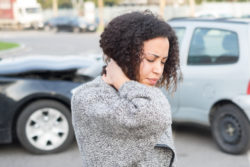Noteworthy Laws For New Jersey Car Crash Victims
 Steps to Take After a Car Accident
Steps to Take After a Car Accident
If you are in a car accident and suffer any physical injuries or property damage as a result, you are probably wondering what choices you have in terms of financial compensation. Just like every other state, New Jersey has a set of laws that dictate these cases, and knowing a little about them can make a big difference in recovery. Here are a few essential laws that are important in New Jersey personal injury cases.
Statute Of Limitations
Statute of limitations is a legal term that tells you how long you have to file a lawsuit. If you do not file the suit before the time limit runs out, you are legally barred from doing so, that is, a court will dismiss it. In New Jersey, the law says that you have two years from the date of the injury to file your initial lawsuit, unless one of the few rare exceptions (also known as extensions) apply to your case. Because of this, it is important to seek legal help as soon as possible after the accident. The time limit may seem long, however, it takes time to gather all of the evidence and assure that the case is as strong as necessary to continue to the next step: filing the lawsuit.
The No-Fault Insurance Law
New Jersey is one of many states that has a no-fault approach to car insurance. Essentially, this means that after a car crash, each party must first file claims with their own insurance companies for compensation of medical bills, car repairs, and other losses regardless of which party is at fault. Only after that can you file a lawsuit against the at-fault driver, as long as certain circumstances apply. This can be confusing so consulting an attorney may assist in untangling some of the complicated information available through the insurance companies.
Comparative Negligence And New Jersey Law
New Jersey subscribes to the modified comparative fault approach when it comes to personal injury lawsuits. This is how it works: during the course of the trial, the jury is asked to decide two important things. The first is the total dollar amount in damages that the plaintiff suffered. The second is to assign a percentage of fault to each party. To calculate how much the plaintiff then receives, their at-fault percentage is multiplied by the total amount in damages. That amount is then subtracted from the total damage, and the result is the amount of money that the plaintiff will be allowed to take home for their losses. An important thing to note is that the fault percentage may affect not only how much a defendant can receive, but whether or not they are entitled to damages at all. If the jury decides that the defendant was over 50% responsible for the accident, then they are barred from recovering anything at all. Not only does the modified comparative approach effect judges and juries, but it is also a tool that insurance companies use when deciding to pay a claim or not.
Contact A Personal Injury Lawyer to Discuss Your Car Accident Case in Scotch Plains
Did you or a loved one sustain serious injuries due to a car crash in NJ? Don’t let the medical bills pile up while you wait for the negligent party or their insurance company to do the right thing. Right now, you need an aggressive personal injury attorney on your side, fighting to get you the compensation you need, want, and deserve. The skilled attorneys at Bramnick, Grabas, Arnold & Mangan, LLC represent clients injured due to car crashes all throughout New Jersey. Call 877-423-4878 or fill out our online contact form to schedule a free consultation about your case. We have an office located at 1827 E 2nd St, Scotch Plains, NJ 07076 as well as Scotch Plains, Westfield, Morristown, East Brunswick, Clifton, Cherry Hill, and Newark, New Jersey.
The articles on this blog are for informative purposes only and are no substitute for legal advice or an attorney-client relationship. If you are seeking legal advice, please contact our law firm directly.

